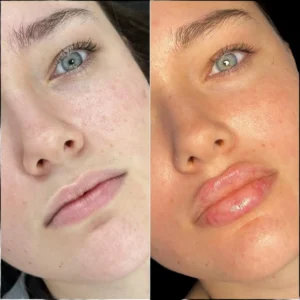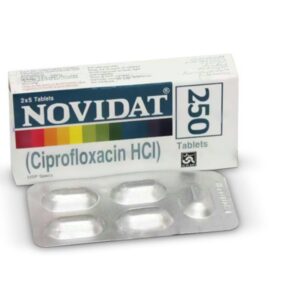Skin tags are small, soft growths that often appear on areas of the body where the skin folds, such as the neck, underarms, eyelids, and groin. While harmless and painless, skin tags can be unsightly and bothersome, prompting many to seek removal options. For residents and visitors of Dubai, finding the best treatment for skin tag removal is a priority, given the hot climate and fashion trends that often expose skin. When discussing Skin Tag Removal in Dubai, the ideal treatment focuses on safety, effectiveness, and minimal downtime. Many factors influence the choice of treatment, including the size, number, and location of the skin tags, as well as skin sensitivity.
Understanding Skin Tags
Before diving into treatment options, it’s helpful to understand what skin tags are and why they appear. Skin tags are harmless growths composed of collagen fibers and blood vessels surrounded by skin. They often develop due to skin friction, hormonal changes, genetics, or even weight gain. Although skin tags don’t require medical attention, some individuals find them bothersome or embarrassing. They can sometimes catch on jewelry or clothing, causing discomfort or bleeding. This often leads to the decision to seek removal.
Common Methods for Skin Tag Removal
There are several treatments available for skin tag removal, each with pros and cons. The best method depends on factors such as the size and location of the skin tag, your skin type, and personal preferences.
Cryotherapy (Freezing)
Cryotherapy involves applying liquid nitrogen to freeze the skin tag, causing it to fall off within a few days. This method is quick, relatively painless, and effective for small to medium-sized skin tags. It is commonly used by dermatologists because it minimizes scarring and doesn’t require cutting.
However, some people may experience mild discomfort, redness, or blistering at the treatment site. It’s also not always suitable for sensitive areas such as the eyelids.
Surgical Excision
Surgical removal involves cutting the skin tag off using a scalpel or scissors. This is a fast and effective method, especially for larger skin tags. The procedure is usually done under local anesthesia to prevent pain.
Though it provides immediate results, surgical excision may cause some bleeding and requires proper wound care to avoid infection or scarring. This method is often preferred when skin tags are thick or pedunculated (attached by a stalk).
Electrocautery (Burning)
Electrocautery uses heat generated by electric current to burn off the skin tag. It is a precise technique that seals blood vessels, reducing bleeding during removal. This method is commonly performed in clinics and offers good cosmetic outcomes.
Some mild discomfort and redness can occur after treatment, but these typically resolve quickly. Electrocautery is suitable for most body areas, including sensitive zones.
Laser Removal
Laser treatment is a popular choice because it targets skin tags precisely without damaging surrounding tissue. A focused beam of light vaporizes the skin tag, promoting rapid healing with minimal scarring.
Laser removal is especially beneficial for multiple skin tags or tags in delicate areas. Although it requires specialized equipment and expertise, it is considered one of the best treatments for skin tag removal in terms of precision and cosmetic results.
Natural Remedies and Over-the-Counter Options
While professional treatments are generally recommended, some people try natural remedies or OTC products to remove skin tags at home. Common natural options include tea tree oil, apple cider vinegar, and castor oil. These methods rely on drying out the skin tag until it falls off.
However, home treatments can be unpredictable, may cause skin irritation, and usually take longer to show results. They are best used with caution, especially on sensitive skin or near the eyes.
Choosing the Best Treatment for You
Selecting the best skin tag removal method depends on multiple factors. Here are some considerations to help you decide:
-
Size and number of skin tags: Larger or multiple skin tags may benefit more from laser or surgical removal. Smaller tags can often be treated with cryotherapy or electrocautery.
-
Location: Delicate areas such as the face or eyelids require gentle methods like laser treatment. Cryotherapy and electrocautery are also suitable, but surgical excision should be avoided in sensitive zones.
-
Skin type and sensitivity: If you have sensitive or darker skin, laser removal performed by an experienced specialist can minimize risks of pigmentation changes or scarring.
-
Comfort and downtime: Cryotherapy and laser treatments usually involve minimal discomfort and quicker healing compared to surgery.
-
Professional advice: Consulting a dermatologist ensures the skin tag is correctly diagnosed and the safest removal method is chosen.
Safety First: How Dermatologists Remove Skin Tags
When considering skin tag removal, safety is paramount. Dermatologists use sterile instruments and advanced techniques to prevent infection and minimize scarring. Before any procedure, the skin tag is carefully examined to rule out other skin conditions that might resemble tags but require different treatment. Professional removal ensures complete removal of the tag, reducing the chance of regrowth. Follow-up care includes keeping the area clean and avoiding sun exposure until fully healed.
Is There Any Risk of Scarring?
One common concern with skin tag removal is scarring. The risk depends largely on the removal method, size of the tag, and individual healing factors. Methods like laser removal and cryotherapy typically cause minimal to no scarring. Surgical excision carries a higher chance of a small scar, but proper aftercare can reduce this.
How Long Does It Take to Heal?
Healing times vary by treatment:
-
Cryotherapy: Usually heals within 7-14 days as the skin tag dries and falls off.
-
Surgical excision: Wound healing may take 1-2 weeks with scab formation.
-
Laser removal: Healing is typically fast, within 5-10 days.
-
Electrocautery: Usually heals within a week with mild redness.
During healing, avoid picking at the area and follow your provider’s instructions carefully.
The Role of Aftercare in Skin Tag Removal
Aftercare is crucial to ensure smooth healing and prevent infection. Keep the treated area clean and dry, avoid scratching, and apply any recommended ointments. Sun protection is essential to prevent pigmentation changes, especially for laser-treated skin.
Understanding Skin Tag Removal in Dubai
With Dubai’s diverse population and skin types, it’s important to choose a removal method that suits your individual needs. Many residents seek expert advice on Skin Tag Removal to access treatments that use the latest technology with personalized care.
Whether you want a quick fix or a gentle approach, consulting a dermatologist in Dubai will guide you toward the safest and most effective option.
Is Skin Tag Removal Dubai Suitable for Everyone?
Almost anyone with skin tags can safely undergo removal, but certain conditions like diabetes or skin infections may require special care. Pregnant women should wait to have skin tags removed unless medically necessary.
It’s also important to have a proper diagnosis to rule out other skin growths that may mimic skin tags.
Conclusion
When considering skin tag removal, Dubai offers a range of effective and safe options tailored to various skin types and preferences. Choosing a professional treatment reduces risks and enhances cosmetic outcomes. Whether opting for cryotherapy, laser treatment, electrocautery, or surgical excision, proper care and expert guidance will ensure you achieve the best results with minimal discomfort.






